Your Cart is Empty
Oase Biomaster 300 Dissection
February 08, 2025 2 min read

The Oase Biomaster series meets all the criteria in our filter buying checklist:
- Heater compartment (one less item in the tank)
- Quick release taps (disconnect hoses from filter easily)
- Removable pre-filter (allows servicing of filter without taking it apart)
- Silent, strong flow
- Priming mechanism (easy to start flow into filter during setup)
- Quality materials
Biggest Advantage
The biggest difference between this filter and others on the market is that it has a pre-filter compartment that can be removed without dismantling the rest of the filter. As planted aquariums produce a lot of debris, being able to regularly clean out the pre-filter without having to dismantle the rest of the filter makes filter maintenance much easier. Convenience encourages good maintenance habits and the regular removal of organic waste has a direct effect on the presence of algae in the tank.
*The pre-filter can only be removed when the right hand quick release taps are locked, stopping the flow of water from the tank.
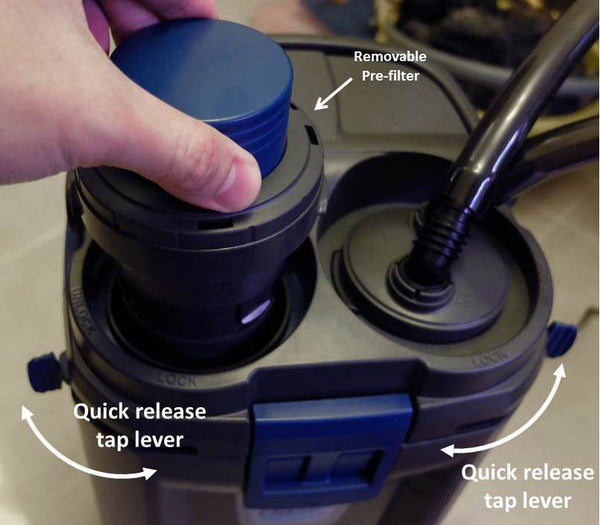
The pre-filter construct:

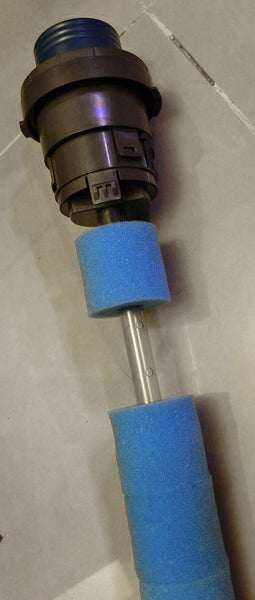
Quick Release & Priming
It has a quick-release lever that shuts off the water flow and allows the hoses and filter to be separated, making it easy to remove the filter without spilling water. Some other brands sell quick release taps separately at a higher cost, but this feature is built in.
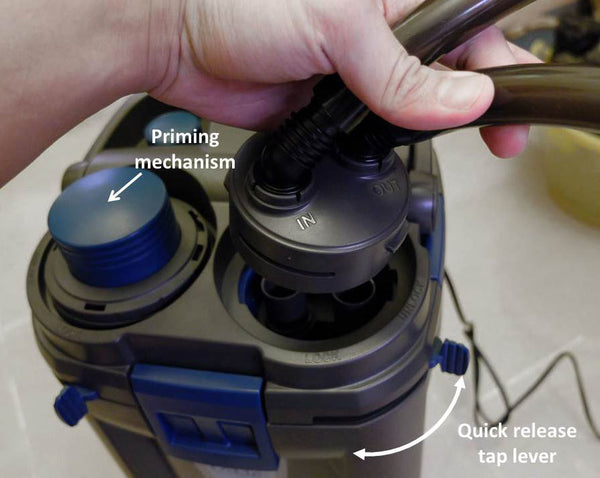
At the top of the pre-filter is the priming button. When the filter is fully set up (with the inlets and outlets in the tank), pressing this down will draw water down from the tank into the filter. This allows the filter to be started easily without having to suck on hoses to get the water flowing.
Filter Media
The Oase Biomaster filter comes with a good mix of Bio-media, coarse filter foam and fine filter foam. The filter media is easily changed to your personalized choices.
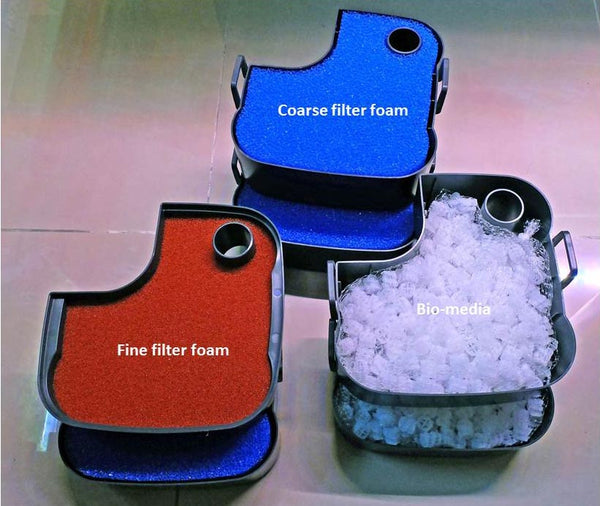
Overall a product that we would recommend.
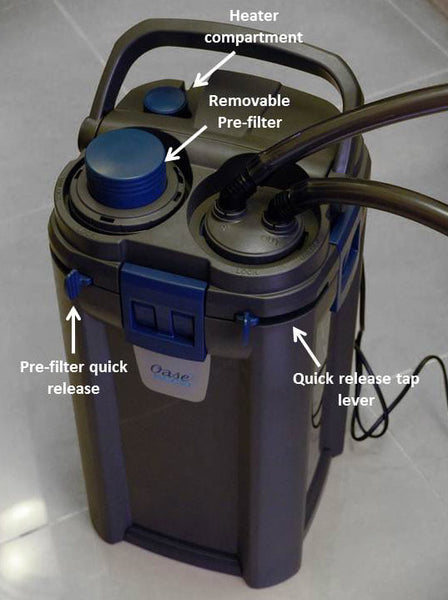
Best for a planted tank?
Even a good sized tank such as the ADA120p (120cm x 45 x 45; 240Litres/65gallons~) below can be powered by a single filter alone if the filter has a good flow rate. We find it more elegant not to require the use of additional pumps. We use a single Oase BioMaster 600 filter on this tank. We find that this filter model is particularly suitable for planted tanks as it has a separate pre-filter chamber that can be easily removed and serviced without having to dismantle the entire filter. The pre-filter chamber catches most of the plant debris that clogs filters in a planted tank. The ability to regularly remove plant debris reduces the amount of organic waste in the tank, which directly translates into better water quality and fewer algae problems.
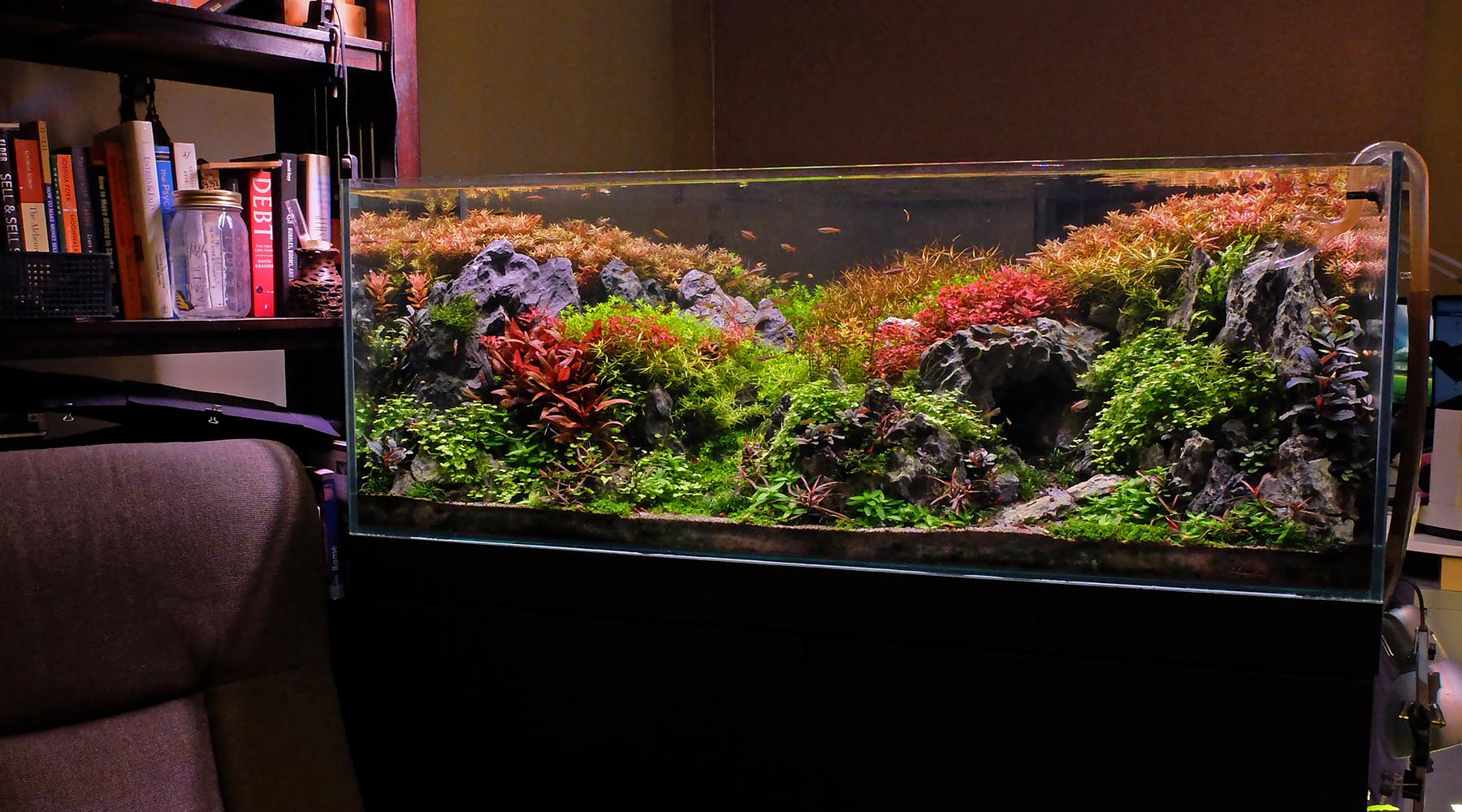
unlock your true potential
Grow anything, defeat algae, create amazing aquascapes

























